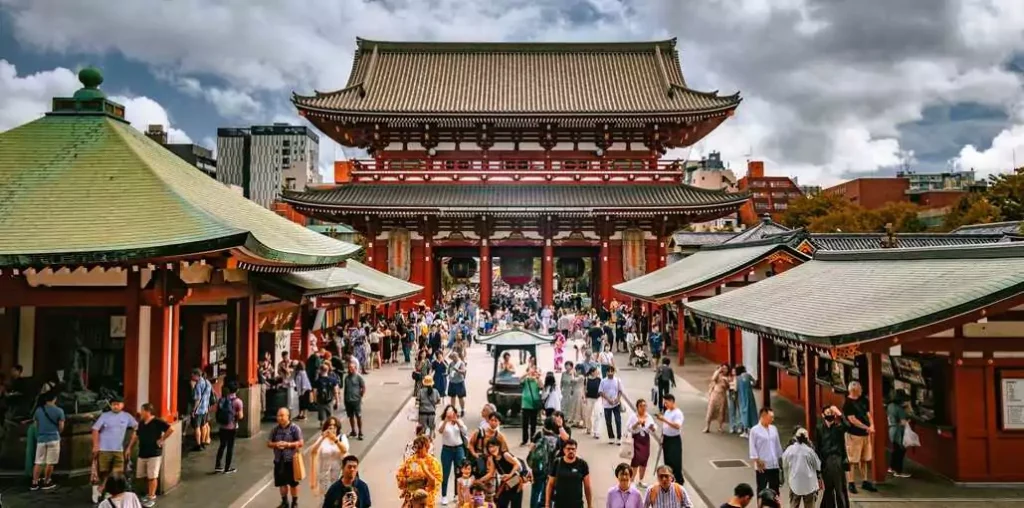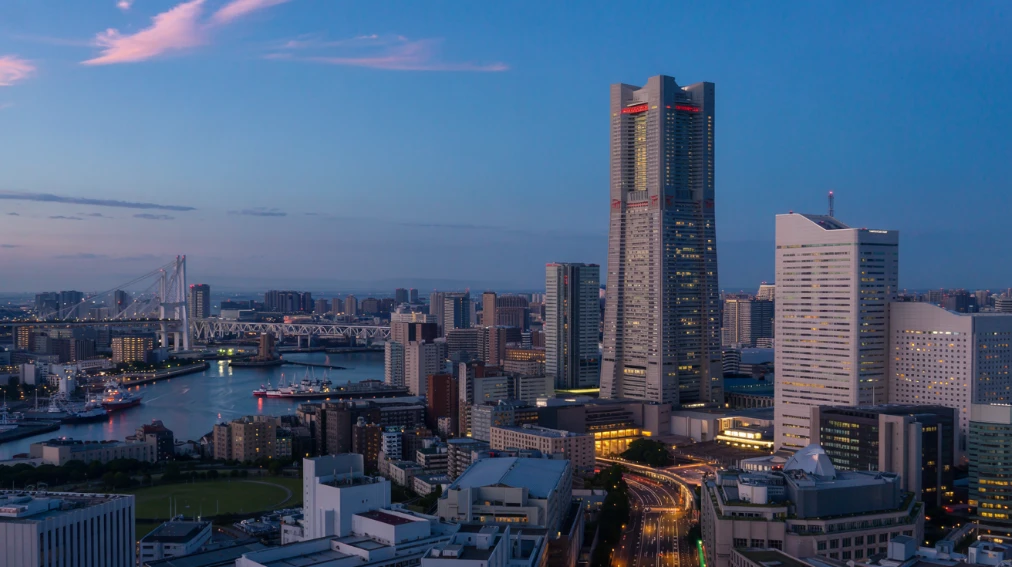Tokyo offers incredible experiences for travelers of all ages, including seniors who prefer a more relaxed pace while still enjoying the city’s rich culture and attractions. Embark on a thoughtfully designed Tokyo itinerary for senior citizens, where the vibrant energy of Japan meets tailored experiences for comfort and enrichment. Discover serene gardens, historic temples, and delightful cultural treasures, all at a pace that prioritizes relaxation and accessibility.
Tokyo Itinerary for Senior Citizens
Day 1: Arrival and Settling In
After a long flight, the first day in Tokyo is all about easing into your adventure. Choose a senior-friendly hotel like the Keio Plaza Hotel in Shinjuku or the Hotel New Otani in Chiyoda, both of which offer spacious rooms, excellent accessibility features (like elevators and step-free entrances), and attentive staff. These hotels also provide on-site dining options, so you can enjoy a light meal without venturing far. Check in, unpack, and take a moment to rest—jet lag can be a challenge, especially for seniors, so there’s no rush.
In the evening, enjoy a gentle activity to kick off your trip: a short stroll around Shinjuku’s Kabukicho (the entertainment district) or a visit to the nearby Omoide Yokocho, a charming alley of tiny eateries. Opt for a simple bowl of ramen or yakitori (grilled chicken skewers) at a spot like Ichiran—it’s casual, delicious, and easy on the stomach. Keep it low-key and head back to your hotel early to recharge for the days ahead.
Practical Tip: Request a room on a lower floor for easier access, and ask the concierge about senior discounts or transportation assistance.
Day 2: Cultural Exploration
Start your cultural journey with a visit to Senso-ji Temple in Asakusa, Tokyo’s oldest and most iconic Buddhist temple. The temple’s vibrant red Kaminarimon Gate and the bustling Nakamise shopping street leading up to it are a feast for the senses. Take your time strolling through—there are benches to rest on, and the flat terrain makes it accessible for those with mobility concerns. Light an incense stick or pick up an omikuji (fortune paper) for a small, meaningful souvenir. The peaceful atmosphere here is perfect for seniors who want to soak in Japan’s spiritual heritage without feeling rushed.

In the afternoon, head to the Edo-Tokyo Museum in Ryogoku. This museum offers a fascinating look at Tokyo’s history, from its days as Edo to its modern transformation. With interactive exhibits, life-sized replicas, and plenty of seating, it’s an engaging yet comfortable experience. Audio guides in English make it easy to follow along at your own pace. Afterward, enjoy a light lunch at the museum café or a nearby spot like Asakusa Mugitoro, known for its gentle yam-based dishes.
Practical Tip: Wear comfortable shoes for the temple grounds, and consider a taxi between locations to save energy.
Day 3: Gardens and Parks
Tokyo’s green spaces are a senior traveler’s dream—peaceful, beautiful, and easy to navigate. Begin your day at Shinjuku Gyoen National Garden, a sprawling oasis in the heart of the city. With its traditional Japanese garden, French rose garden, and English landscape garden, it’s a visual delight in any season. Spring cherry blossoms, summer greenery, or autumn foliage—there’s always something to admire. The paths are well-maintained and mostly flat, with benches scattered throughout for resting. Bring a hat and water, and take it slow.
Next, visit Hama-rikyu Gardens, a historic garden by Tokyo Bay. Once a shogun’s retreat, it now offers stunning views of modern skyscrapers juxtaposed against tranquil ponds and teahouses. Stop at the Nakajima-no-Ochaya teahouse for a cup of matcha and a sweet—it’s a serene spot to relax. The garden’s layout is accessible, though some areas have gravel paths, so sturdy shoes are a must.
Day 4: Scenic Views
Day 4 is all about breathtaking vistas. Start at Tokyo Skytree, the tallest structure in Japan. Skip the long lines by booking a senior-priority ticket in advance, which grants access to the observation decks at 350m and 450m. The panoramic views of Tokyo’s skyline, with Mount Fuji visible on clear days, are worth the trip. Elevators are fast and smooth, and there’s ample seating at the top to enjoy the scenery at your leisure. A retired traveler once said, “I felt on top of the world—literally and figuratively!”

In the afternoon, take a Sumida River cruise from Asakusa to Odaiba. These short, relaxing boat rides offer a unique perspective of Tokyo’s waterfront, passing under historic bridges and past modern landmarks. The boats are equipped with comfortable seating and often have English commentary, making it an effortless way to sightsee. End your day with a stroll along Odaiba’s promenade, where the Rainbow Bridge lights up at night.
Related: A 5-Day Osaka Itinerary for Senior Citizens: A Journey of Comfort and Discovery
Day 5: Traditional Experiences
Immerse yourself in Japan’s traditions today. Begin with a tea ceremony at a venue like Shizu-kokoro in Asakusa or the Hotel Chinzanso Tokyo. These sessions, often led by English-speaking hosts, guide you through the art of preparing and drinking matcha in a calm, seated setting. It’s a meditative experience that’s both educational and soothing—perfect for seniors who enjoy cultural depth without physical strain.
In the evening, catch a Kabuki theater performance at the Kabukiza Theatre in Ginza. This traditional drama, with its colorful costumes and dramatic storytelling, is a must-see. Opt for a single-act ticket (about 90 minutes) to keep it manageable, and rent an English audio guide to follow along. The theater offers cushioned seats and senior discounts, ensuring a comfortable experience.
Practical Tip: Book tea ceremony and theater tickets in advance, and arrive early to settle in.
Day 6: Shopping
Tokyo’s shopping districts are a treat for seniors who love a leisurely browse. Start in Ginza, the city’s upscale shopping hub. Wide sidewalks, department stores like Mitsukoshi, and luxury boutiques make it a pleasant place to explore. You don’t need to splurge—window shopping and people-watching are just as enjoyable. Stop for tea at a café like Café de l’Ambre for a refined break.

Later, head to Asakusa’s Nakamise Street (near Senso-ji) for traditional souvenirs. Pick up handmade fans, chopsticks, or senbei (rice crackers) from small, family-run shops. The area is flat and pedestrian-friendly, with plenty of spots to rest. A senior shopper shared, “I loved the mix of modern elegance in Ginza and old-world charm in Asakusa—it was shopping with soul.”
Day 7: Day Trip to Yokohama
Take a day trip to Yokohama, just 30 minutes from Tokyo by train. The Yokohama Landmark Tower Sky Garden offers stunning views from its 69th-floor observatory, accessible by high-speed elevator. Then, explore the Minato Mirai waterfront, with its gentle boardwalks and scenic harbor. Stop at the Cup Noodle Museum for a lighthearted look at instant ramen history—interactive and easygoing.

In the afternoon, visit Yokohama Chinatown, Japan’s largest. Stroll through colorful streets, sample steamed buns or dim sum at a spot like Heichinrou, and enjoy the lively yet relaxed vibe. The area is compact and walkable, with benches aplenty.
Practical Tip: Take the JR Yokosuka Line for a comfortable ride, and wear layers for coastal weather.
Day 8: Culinary Delights
Tokyo’s food scene is a highlight for seniors, with options that are flavorful yet gentle. Join a senior-friendly food tour with a company like Arigato Japan, which offers small-group experiences tailored to your pace. Sample sushi, tempura, and wagashi (traditional sweets) at accessible venues. Guides often share cultural insights, making it a feast for the mind too.
For dinner, try Tonkatsu Maisen in Aoyama for tender pork cutlets or Kani Doraku in Dotonbori for a crab feast—both offer English menus and cozy seating. A food-loving senior raved, “Every bite was a discovery, and I never felt rushed.”
Day 9: Historical Exploration
Start your day with a visit to the Imperial Palace, the residence of Japan’s Emperor. The palace grounds offer a glimpse into Japan’s rich history and cultural heritage. The palace is surrounded by beautiful gardens and walking paths, making it a perfect place to relax and unwind.
- Accessibility: The palace grounds are wheelchair accessible, with ramps and rest areas available.
- Opening Hours: The palace grounds are open from 9:00 AM to 4:00 PM, with last entry at 3:30 PM. It is closed on Mondays and Fridays, except on national holidays.
In the afternoon, visit the Meiji Shrine, a beautiful Shinto shrine located in a tranquil forest. The shrine is dedicated to the spirits of Emperor Meiji and Empress Shoken and offers a serene and peaceful atmosphere.
The shrine is located near Harajuku Station, which is easily accessible by train.
Day 10: Leisure and Souvenirs
Start your day with a visit to one of Tokyo’s accessible shopping areas. Tokyo offers a variety of shopping options, from traditional markets to modern malls, making it easy to find the perfect souvenir.
Recommended Shopping Areas:
- Shibuya: Shibuya is a bustling shopping district known for its modern malls and trendy boutiques. The area is easily accessible by train and offers a variety of shopping options.
- Shinjuku: Shinjuku is another popular shopping district, offering a mix of traditional and modern shops. The area is easily accessible by train and is known for its vibrant atmosphere.
In the afternoon, visit some of Tokyo’s best souvenir spots to find unique and memorable gifts. Tokyo offers a wide range of traditional Japanese souvenirs, including ceramics, textiles, and snacks.
Recommended Souvenir Spots:
- Nakamise Shopping Street: Located near Senso-ji Temple, this traditional shopping street offers a variety of Japanese souvenirs, snacks, and crafts.
- Ameyoko Market: This bustling market offers a variety of traditional Japanese snacks, souvenirs, and household items. The market is located near Ueno Station, which is easily accessible by train.
Related: The 15 Best Slow-Paced Tours of Japan for Seniors
Where to stay in Tokyo for seniors?
Looking for a comfortable and accessible place to stay in Tokyo as a senior? Here are some top recommendations:
Senior-Friendly Neighborhoods
Consider staying in these neighborhoods, known for their accessibility and amenities:
- Hiroo: Peaceful atmosphere, green spaces, and proximity to Arisugawa Park.
- Daikanyama: Trendy, calm, and well-equipped with public facilities.
- Ebisu: Sophisticated, relaxed, and close to healthcare facilities.
- Kichijoji: Charming area with a mix of urban convenience and natural tranquility.
- Meguro: Suitable for seniors, with a range of amenities and services.
Recommended Hotels
Some top-rated hotels for seniors include :
- Hotel Villa Fontaine Grand Haneda Airport: 4-star hotel with free WiFi, restaurants, and hot springs.
- Shinjuku Washington Hotel Main: 4-star hotel with free WiFi, 15 restaurants, and helpful staff.
- APA Hotel & Resort Ryogoku Eki Tower: 4-star hotel with free WiFi, restaurants, and a convenient location.
- Tobu Hotel Levant Tokyo: 3.5-star hotel with free WiFi, restaurants, and breakfast.
- Hotel Metropolitan Edmont Tokyo: 4-star spa hotel with free WiFi, spa, and breakfast.
Luxury Options
If you’re looking to splurge, consider:
- Kimpton Hotel: Luxurious hotel with modern amenities, rooftop bar, and fitness center.
- The Ritz-Carlton, Tokyo: 5-star hotel with elegant rooms, fitness center, and exceptional service.
- Grand Hyatt Tokyo: 5-star hotel with spacious rooms, fitness center, and excellent dining options.
Accessible Hotels
Some hotels with excellent accessibility features include:
- Asakusa Kokono Club Hotel: Charming hotel with Japanese-style motif, bicycles for rent, and close to Senso-ji Temple.
- Shibuya Stream Hotel: Modern hotel with well-equipped guest kitchen, fitness center, and nearby shopping complex.
- Mimaru Tokyo Asakusa Station Apartment Hotel: Convenient location, spacious rooms, and easy access to public transportation.
Where to avoid staying in Tokyo?
When planning your stay in Tokyo, consider avoiding areas that might be challenging for seniors or those looking for a more relaxed experience. Some areas to steer clear of include:
Busy and Crowded Areas
- Shinjuku’s Kabukicho district: Known for its vibrant nightlife, this area can be overwhelming and noisy.
- Ginza: While upscale, Ginza is extremely crowded and expensive, which might be overwhelming for some seniors.
- Shibuya Crossing area: One of Tokyo’s busiest areas, with crowds and noise that might be exhausting.
Areas with Limited Accessibility
- Asakusa’s Nakamise shopping street: While charming, this historic area has narrow streets and crowded alleys that might be difficult to navigate.
- Tsukiji Outer Market: While famous for sushi, this area can be crowded and noisy, with limited accessibility.
Areas with High Crime Rates or Safety Concerns
- Roppongi’s nightlife area: Known for its bars and clubs, this area can be seedy and attract a rowdy crowd.
- Some areas in Shinjuku and Shibuya: Be cautious of areas with high crime rates or safety concerns, such as Shinjuku’s Ni-chome district.
Areas with Limited Amenities
- Some areas in the city outskirts: Areas far from central Tokyo might have limited amenities, services, or public transportation options.
Keep in mind that Tokyo is generally a safe and welcoming city, and many areas are suitable for seniors. Research your options, and consider factors like accessibility, noise levels, and amenities when choosing your accommodations.
Can you walk around Tokyo at night?
Walking around Tokyo at night can be a unique and exciting experience, but it’s essential to be aware of the city’s safety and accessibility features. Tokyo is generally considered a safe city, with low crime rates compared to other major cities worldwide.
Safety Precautions
When walking around Tokyo at night, take some basic precautions to ensure your safety:
- Stick to well-lit areas: Major streets and shopping districts are usually well-lit and populated, even at night.
- Avoid dark alleys and quiet streets: Some areas might be poorly lit or less populated, so it’s best to avoid them, especially if you’re alone.
- Be mindful of pedestrian traffic: Tokyo’s streets can be crowded, even at night, so be aware of other pedestrians, bicycles, and vehicles.
- Follow traffic signals and rules: Tokyo’s traffic signals and rules are strictly enforced, so make sure to follow them to avoid accidents.
Areas to Explore at Night
Some areas in Tokyo are particularly enjoyable to explore at night, with beautiful lighting, food, and entertainment options:
- Shinjuku’s Kabukicho district: This area is known for its vibrant nightlife, with neon lights, restaurants, and entertainment venues.
- Shibuya Crossing area: This famous intersection is a must-see at night, with its giant video screens and bustling crowds.
- Ginza: This upscale district is beautiful at night, with its luxury shopping and dining options.
- Asakusa: This historic area is charming at night, with its traditional architecture and street food.
Accessibility at Night
Tokyo’s public transportation system operates late into the night, with many trains and buses running until around midnight. However, some stations and lines might have limited hours or service:
- Subway and train lines: Most lines operate until around midnight, but some might have limited service or be closed for maintenance.
- Buses: Many buses run until around midnight, but schedules might vary depending on the route and area.
- Taxis: Taxis are widely available, but be prepared for potential language barriers and higher fares at night.
Conclusion:
Tokyo is a vibrant and exciting destination that offers a wealth of experiences for senior citizens. From its rich cultural heritage and stunning natural beauty to its modern conveniences and friendly locals, Tokyo has something to offer everyone. This 10-day itinerary is designed to ensure a comfortable and enjoyable experience, with a mix of cultural exploration, relaxation, and indulgence. Whether you’re interested in history, art, nature, or simply soaking in the vibrant atmosphere, Tokyo is sure to leave you with unforgettable memories.

